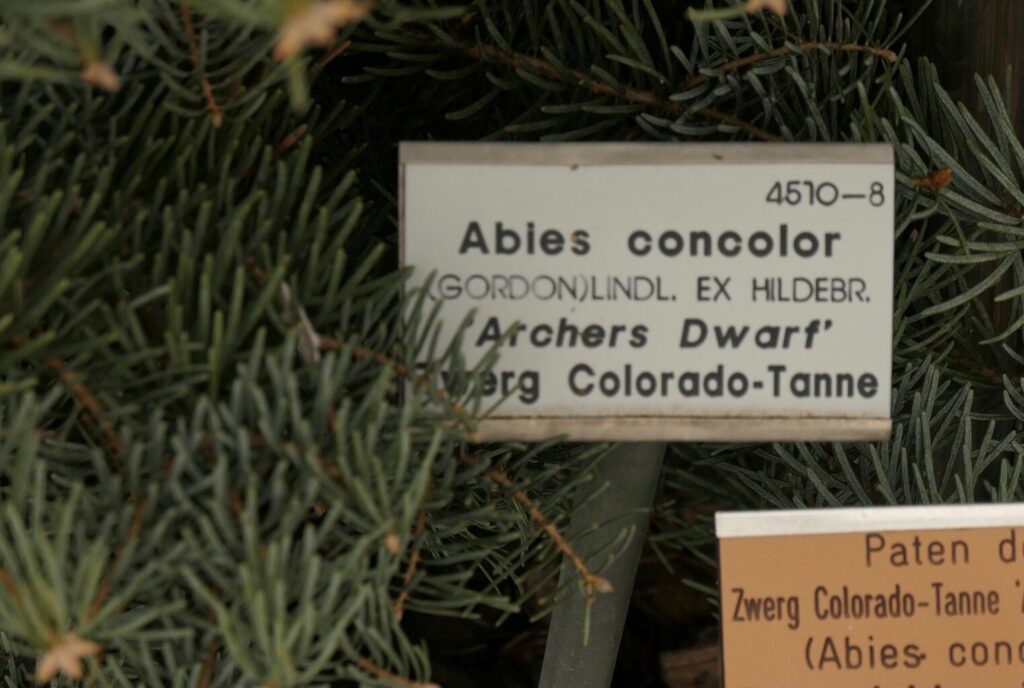Propagating Abies concolor: The White Fir’s Journey from Seed to Sapling
Introduction:
Abies concolor, commonly known as the White Fir, is a majestic evergreen prized for its silvery-blue foliage, graceful shape, and tolerance of various conditions. Its popularity among gardeners stems from its relatively low maintenance requirements and striking visual appeal, making it a desirable addition to landscapes ranging from formal gardens to naturalized settings. However, propagating this elegant conifer presents unique challenges, requiring patience and a keen understanding of its specific needs. While several propagation methods exist, each offers a distinct set of hurdles and rewards.
Seed Germination:
Seed germination is a viable method for propagating Abies concolor, but it’s not without its difficulties. The primary challenge lies in the seed’s dormancy requirements. White Fir seeds require stratification – a period of cold, moist treatment – to break dormancy and stimulate germination. This typically involves mixing seeds with a moist medium (e.g., peat moss and perlite) and storing them in a refrigerator at temperatures between 33-40°F (0-4°C) for 60-90 days.
Practical Tips:
- Seed Source: Collect seeds from mature, healthy cones in late autumn. Allow cones to dry naturally before extracting seeds.
- Stratification Technique: Ensure the medium remains consistently moist but not waterlogged during stratification. Regularly check for mold and adjust moisture levels as needed.
- Sowing: After stratification, sow seeds in a well-drained seed-starting mix, covering them lightly with the mix. Maintain consistently moist conditions and provide bright, indirect light. Germination can take several weeks to several months.
Rewards:
Successful germination yields genetically diverse seedlings, allowing for the development of unique specimens adapted to specific environments. It also offers a cost-effective means of propagation, particularly for large-scale projects.
Cuttings:
Propagating Abies concolor from cuttings is significantly more challenging than seed germination. While not impossible, success rates are generally low. The difficulty stems from the relatively low rooting capacity of White Fir cuttings.
Challenges:
- Hormone Requirements: High concentrations of rooting hormones are often necessary, and even then, rooting success is not guaranteed.
- Environmental Control: Maintaining consistently high humidity and optimal temperatures is crucial for successful rooting. This often necessitates the use of a propagation chamber or misting system.
- Disease Susceptibility: Cuttings are particularly susceptible to fungal diseases, requiring meticulous hygiene and fungicide application.
Rewards:
While challenging, successful propagation via cuttings preserves the exact genetic characteristics of the parent plant, ensuring uniformity in subsequent generations.
Division:
Division is not a practical method for propagating Abies concolor. White Firs develop a single, deep taproot system, making it extremely difficult and damaging to divide established plants.
Tissue Culture:
Tissue culture is a viable, albeit specialized, method for propagating Abies concolor. This advanced technique involves growing plant tissues in a sterile laboratory environment using nutrient media.
Challenges:
- Specialized Equipment and Expertise: Tissue culture requires sophisticated equipment, a sterile environment, and specialized knowledge in plant tissue culture techniques.
- High Initial Costs: Setting up a tissue culture lab involves significant investment in equipment and materials.
- Potential for Contamination: Maintaining a sterile environment is crucial; any contamination can lead to significant losses.
Rewards:
Tissue culture offers a highly effective means of rapid propagation, allowing for large-scale production of genetically identical plants. It can also be used to eliminate diseases and produce disease-free stock.
Conclusion:
Propagating Abies concolor presents unique challenges, with seed germination offering a relatively accessible (though time-consuming) approach, while cuttings and tissue culture require advanced techniques and resources. Each method offers specific rewards, from genetic diversity (seeds) to uniformity (cuttings and tissue culture).
The inherent satisfaction in cultivating a White Fir from seed, navigating the challenges of stratification and germination, is undeniable. The patience required, and the eventual success in witnessing the growth from a tiny seed to a majestic evergreen, is deeply rewarding. Even with the inherent difficulties, the journey is worth the effort for any aspiring propagator willing to dedicate the time and effort to nurture these magnificent trees.
